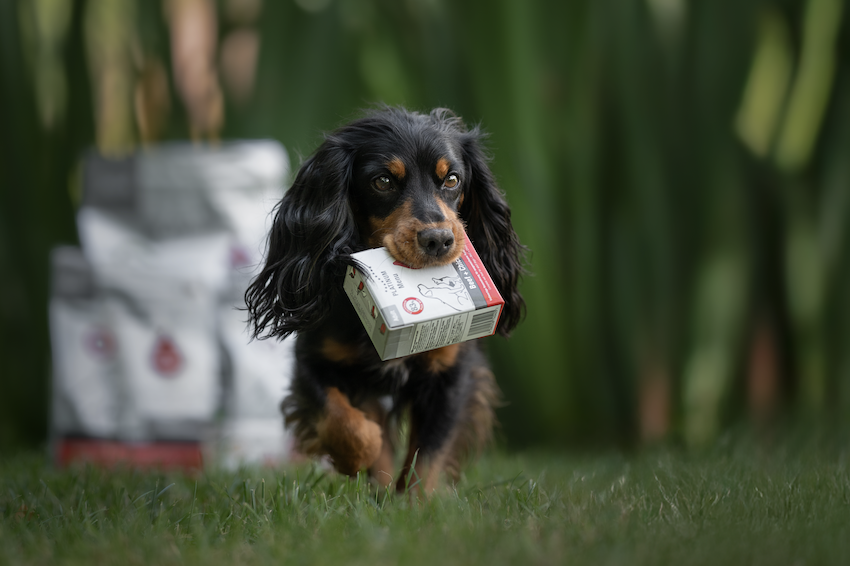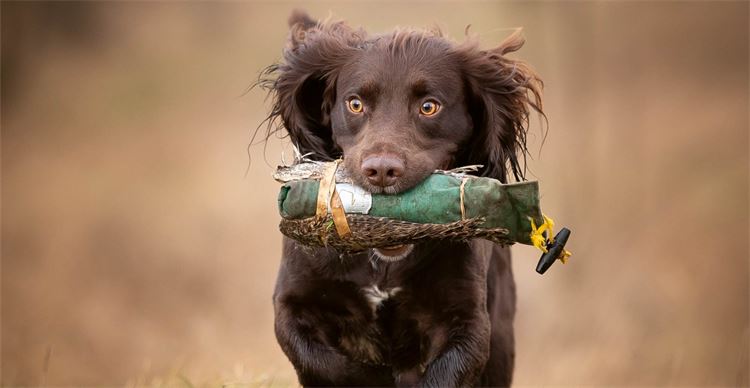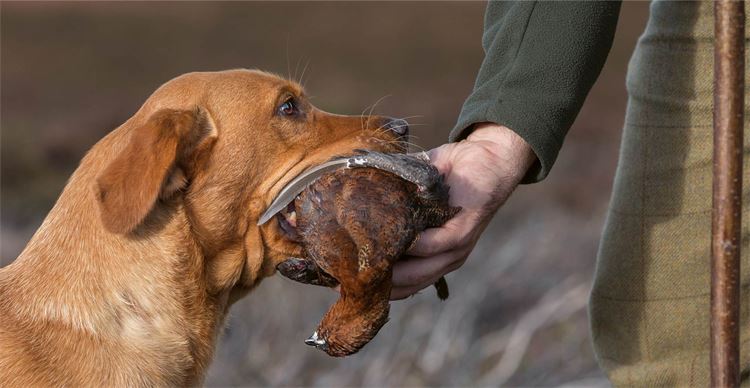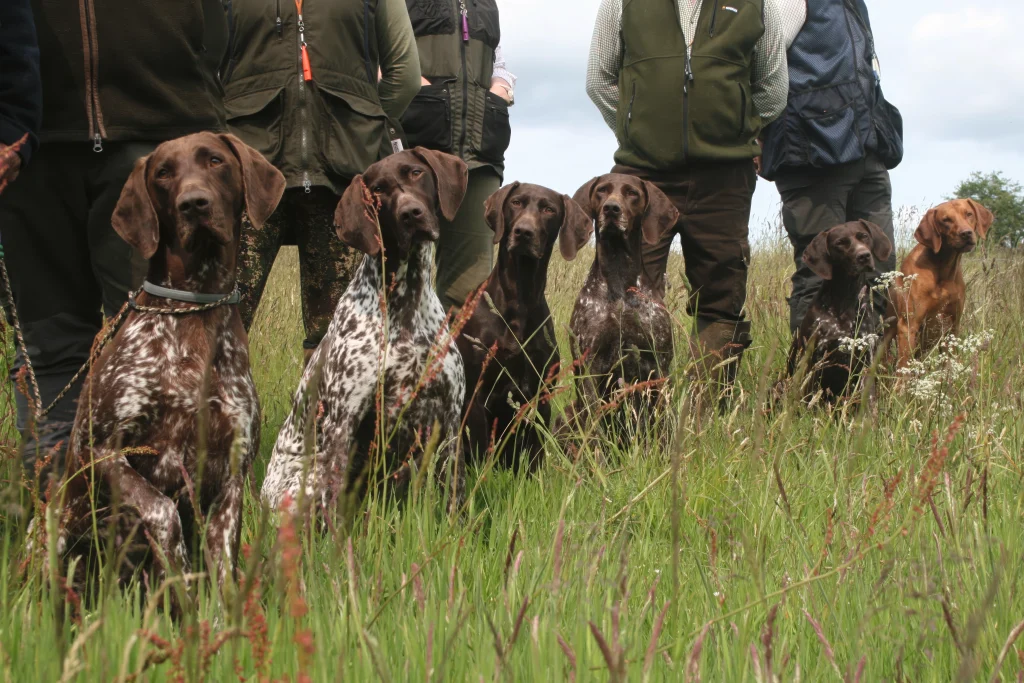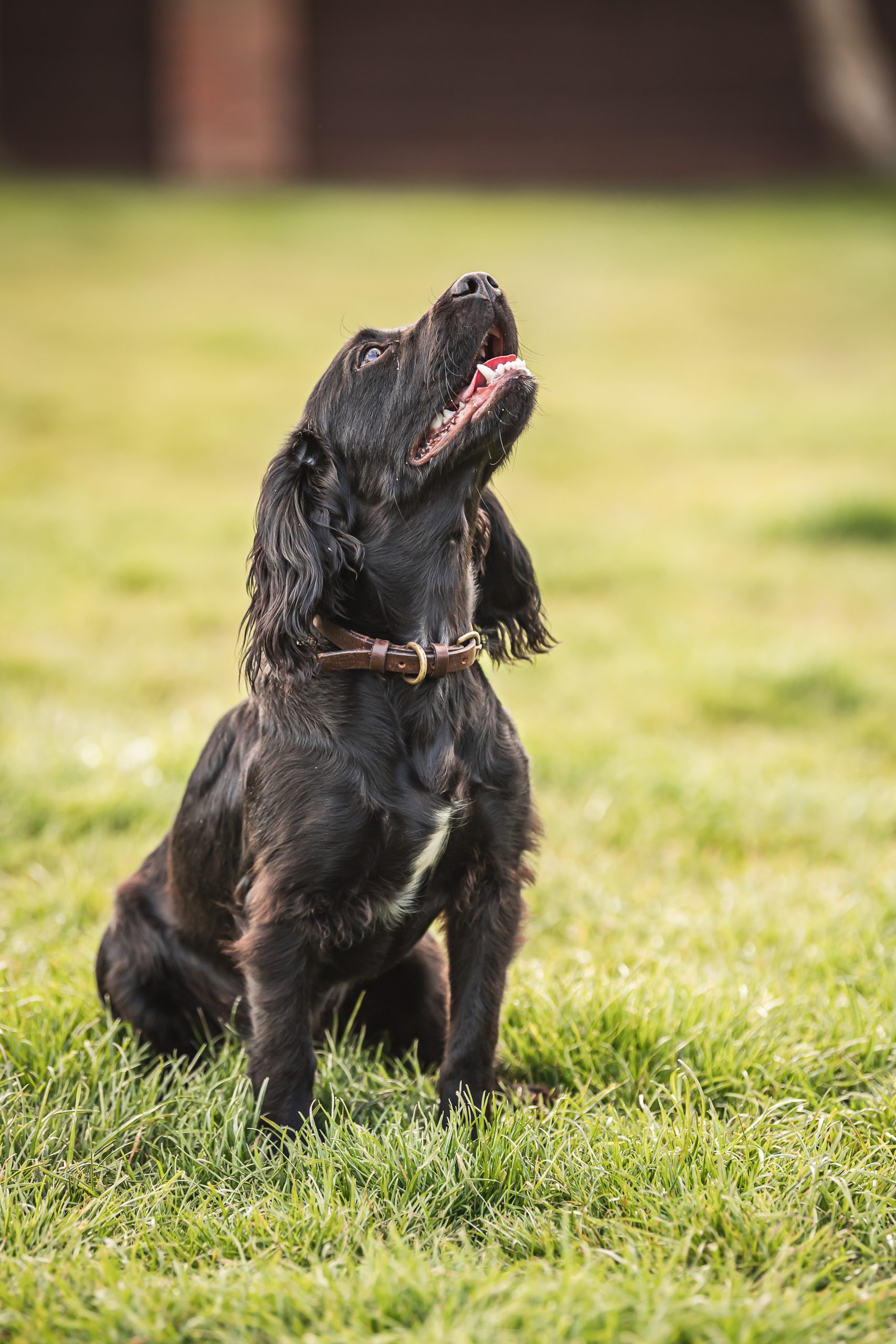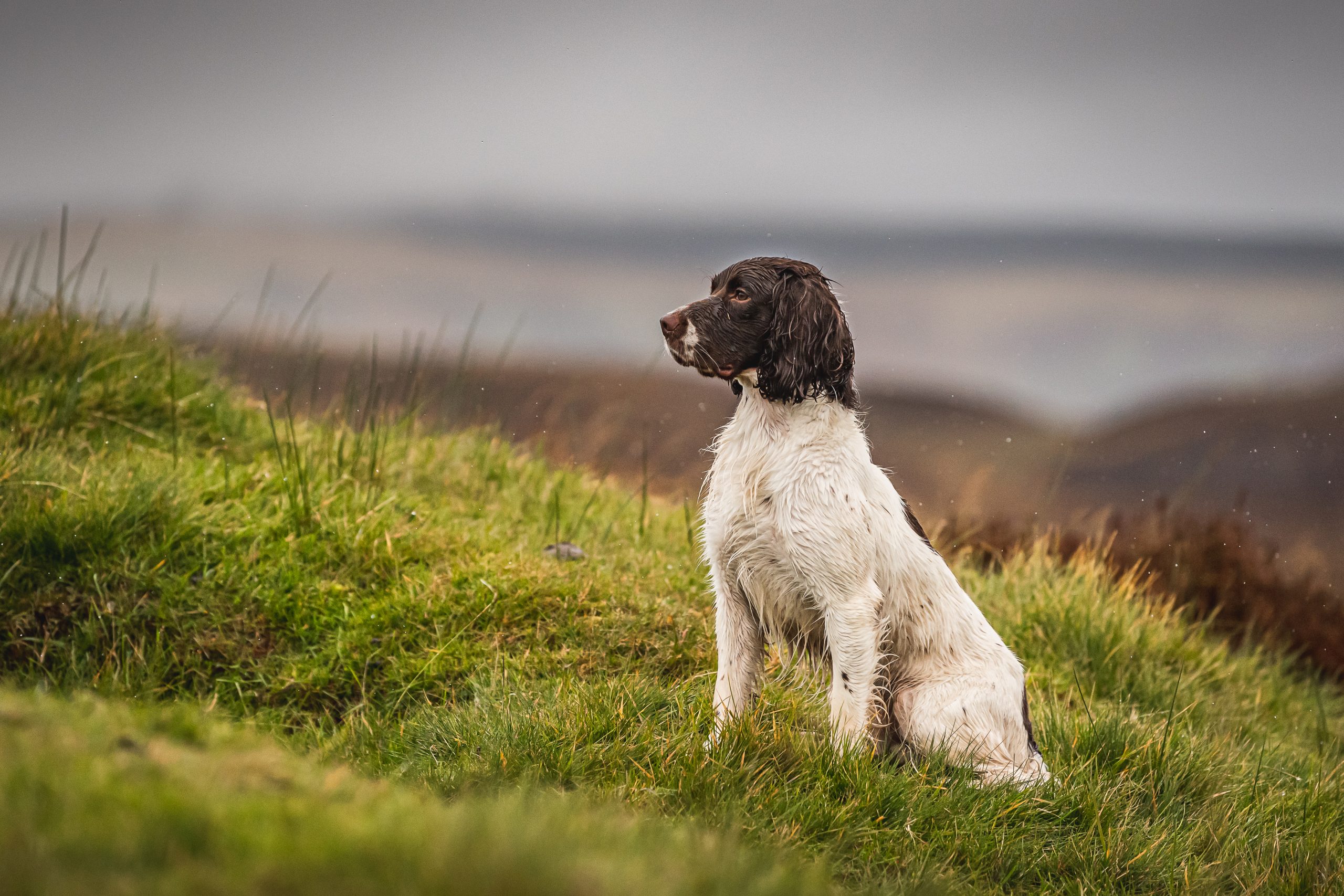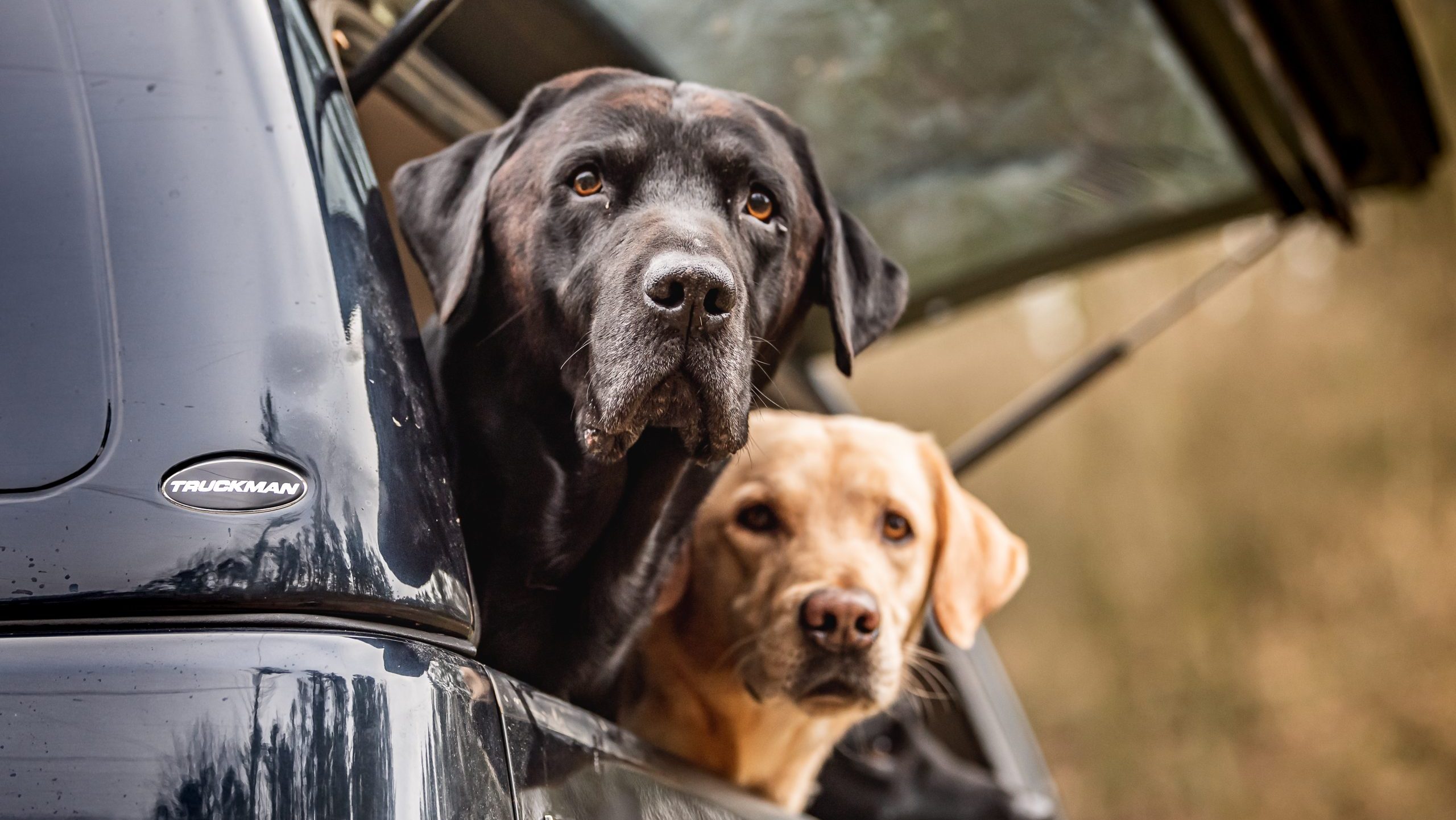Training
How to take great gundog images
We asked a select group of gundog photographers for their top tips on how to capture your beloved working gundogs in action, or just out posing in the field…
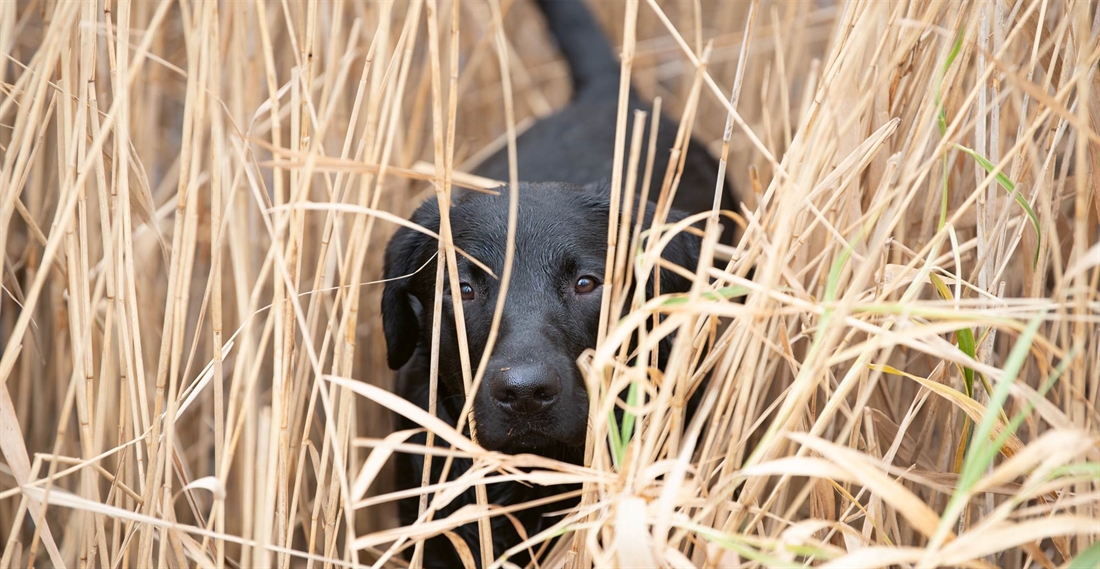
Harry Lessman
Pick your surroundings
A key part of capturing lovely images of any dog is for them to be in relaxed, comfortable surroundings, so an ideal place for a photoshoot is on their regular walk or in familiar place. I like to capture images of dogs being natural while exploring and being relaxed. Some of my favourite places to capture images are wild woodlands in autumn or a sprawling beach on a balmy summer evening.
Always be aware of the background, as this can make or break a favourite image. It is very easy to overlook a tree or other static object in the background behind the dog, and this can then give the impression the object is growing out of the dog in a photograph.
Make friends with the dog
I have always found spending 5–10 minutes getting to know a dog before a photoshoot is a great way to ensure a happy, and hopefully, compliant subject. Dogs are very good judges of character and once they realise you want to be their friend, they will be happy to spend time with you and hopefully feel relaxed. This will shine through in the images. Don’t be afraid to show them the camera and let them have a little sniff so they know it’s nothing to be concerned about. It’s better to do this first before you start pointing it at them.
Man’s best friend
Some of my favourite working dog images are those of dogs interacting with their humans. I like to capture the little moments often away from the other action, particularly on a busy shooting day. It’s very rewarding to photograph the bond between people and dogs, be it sharing a sausage roll at elevenses, or a quick 40 winks on the way home in the shoot wagon tucked between their owner’s wellie boots.
The need for speed
Photographing working dogs actually working is a very different ball game. I attend many shoot days every year and it’s always an enjoyable challenge. This type of dog photography entails a very different approach from a more scheduled photoshoot – the action can happen in the blink of an eye, so you need to be ready and constantly aware of what’s going on around you.
I like to have my camera set up with a fast shutter speed to cover all scenarios. For the technical readers, I normally opt to shoot in shutter priority and control the aperture with the ISO. One minute you can be photographing a steady labrador sitting patiently on the peg, the next moment a super fast spaniel may appear retrieving some game. The moral of this story is to have your camera set up for the fastest action you are likely to capture on the day.
I like to shoot with a shallow depth of field. This gives a crisp sharp subject, isolated from a creamy soft background. Add to this some soft natural sunlight diffused by clouds (I never use flash) and you will be well on your way to capturing a beautiful image.
Get down to their level
My final tip: if possible, get down low when photographing dogs and ensure you are focusing on their eyes. Making a small sound will help get their attention. Images are far more appealing when taken at the dog’s level rather than looking down on them. By getting down low you will also have more options to compose your image with an attractive background. Standing up and shooting down on them will, in most cases, result in just the dog and the surrounding ground in the image…
www.harrylessmanphotography.co.uk
Carl Thomas
Know your subject and surroundings
I have three gundogs (a springer and two working cockers) and a shotgun, and I have experienced many wonderful days shooting over the years. This helps significantly as I know what to look for when it comes to that special image that captures the moment and character of the dog. I would recommend familiarising yourself with the typical stature and poses for the various breeds. Also, if you are photographing gundogs on a shoot day, make sure you are aware of the etiquette expected during the day. It is a good idea to have a chat with the shoot captain in the morning so as not to get in the way of guests or inadvertently cause a safety issue.
Equipment and clothing
Wear appropriate clothing. Usually I would recommend a comfortable pair of boots, waterproof overtrousers and a flexible jacket as you will be spending a fair amount of time moving around and lying on the ground. In terms of the camera and lenses, this can be a minefield as there are so many options now, but for me the camera needs to be robust and weather sealed to cope with the elements. It is not just rain, but the dust, mud and water that you will encounter in this pursuit. The same applies to lenses. I use a Canon 1DX MKII camera. It is a pro model. My go-to lens is the Canon 70-200 F2.8L IS MKIII.
Getting the perfect composition
Half the battle can be won here by making sure you are in the dog’s world – get down to their level by lying down or at least kneeling. This will transform your images. I’ve taken this to great lengths, at times even getting into water. On a more practical level, the image composition you will achieve by lying on the ground when a gundog is running towards you will look great. Get the handler to stand behind you so that the dog will run back towards you on the retrieve. Or face the handler whilst the dog marks the retrieve. This can really enhance the composition. I often get the handler’s boots in the shot which helps to give some context.
Camera settings
There are a number of areas to master. First, sharp focus – we want an image that is focused in the right place on the gundog. To achieve this I use the AI Servo focus setting on my camera, which enables me to maintain focus on moving subjects and select a single focus point, which will be on the dog’s eyes. This setting will allow me to track the dog as it runs towards the handler.
Second, the camera shutter speed needs to be high for action shots, so I would recommend using high speed continuous shooting and setting it at 1/1,200sec or higher.
Third, I like to set the aperture to F2.8 on my lens. This allows the maximum amount of light and creates a nice shallow depth of field which softens the background.
Black dogs
I am often asked how to achieve the best images of black or dark-coloured dogs. This can be very challenging. First, the focusing system on my camera uses contrast in order to focus, but a black or single colour dog makes this more difficult, so it is important to try and get the light behind you. I would also suggest over exposing the shot a little as this will help bring out the detail. Also, if it is a private client shoot, you can give yourself an advantage by choosing the morning or evening – known as the ‘golden hour’ – when the light is softer. Always try and avoid midday sun if you can, as it is very harsh and difficult to work with.
www.carlthomasphotography.co.uk
Caroline Dell
Know your camera, not just the odd button
You have made the investment – you have bought a camera and a lens. Knowing your kit and understanding how it works is so important, and will help you achieve great results rather than becoming frustrated and then leaving it in the box.
Take the time to read through the manual, watch some of the great online videos, or even better, book a lesson to make sure you are in charge of your camera.
Know where your buttons are so you can change important settings such as aperture, shutter speed and focus points whilst still looking through the viewfinder. This should help to avoid missing those special moments. The more you practice, the more it becomes second nature and you will find your fingers hit the right button each time.
Composition is crucial
Does your picture tell a story? A simple, well-taken portrait is a beautiful thing and can be achieved in just about any setting, but look for a story as well. Dog and handler shots are great, and if you catch these moments right they can tell a great story. If you want things to be a little more staged, once you start adding props to a scene, make sure they work with the dog to tell a story. A labrador and a pair of boots works great and can be a set-up used for shoots both indoors and outdoors.
Make sure you look all around your subject. There is nothing more annoying than a beautiful portrait shot with a stick or a post or a branch coming out the top of the dog’s head.
Sharp eyes and happy ears
The eyes are the window to the soul – this is very true and we nearly always connect with the eyes first in a picture, whether it’s a person or a dog – so make sure they are pin sharp. In animals, ears are just as important. Try and make sure the ears are alert and ‘happy’ looking as opposed to pushed back – a sign that some dogs really aren’t comfortable.
Action shots
If it’s action shots you are after, keep your shutter speed as high as you can – it’s all about shutter speed and timing.
Watch the dog run for a while and get a feel for its stride pattern, then focus on the eyes and away you go. Shutter speed needs to be higher than 1/1,000sec and you may need to push your ISO up to achieve this. Make sure you are using the continuous servo setting and high speed continuous shooting modes (if you don’t know what those are, revert to your user manual). I like to use a single focus point and aim for an F-stop of around F4.
Don’t train the dog with the camera
We all love our dogs and we all love to be outside with them, whether it’s for a morning’s gundog training or an afternoon ramble, but take the dummies training and the camera rambling. Dogs are quick to learn that if you are concentrating on something else then you aren’t concentrating on them. Then you will end up with average images and a badly trained gundog!
Quick tips
Most of us are out with our dogs all year round, so buy your camera a protective cover for the wet days.
If you get caught out in bad weather, a carrier bag with a hole in the end works just as well.
Make sure you check the end of your lens for smears before you start shooting. An errant nose up your lens can be the end of some great pictures.
Buy lens wipes and not tissues.
Keep your camera clean and serviced.
Keep a spare battery and a spare memory card with you.
Take the time to look behind you now and then – you never know what you might see.
www.workinglineimages.co.uk
Related articles
Training
How to make your gundog's first shoot day a success
As the new shooting season begins Ben Randall has some expert guidance on getting it right from the very start with your young dog.
By Time Well Spent
Events
Training
Training news
Scottish HPR Team Prepares for HPR Home Internationals at The Game Fair
Preparing for the HPR Home Internationals, taking place at the Game Fair in July, requires dedication and a different training approach. Scottish HPR team captain Katrina Wilkinson talks us through th...
By Time Well Spent
Get the latest news delivered direct to your door
Subscribe to Gundog Journal
Unlock the full potential of your working dog with a subscription to Gundog Journal, the UK’s only dedicated magazine for gundog enthusiasts. Published bi-monthly, this authoritative resource delivers expert training advice, in-depth interviews with top trainers and veterinary guidance to help you nurture a stronger bond with your dog.
With stunning photography and thought-provoking content, Gundog Journal is your essential guide to understanding, training and celebrating your working dog.
Save 10% on shop price when you subscribe, with a choice of packages that work for you. Choose from Print & Digital or Digital only with each journal delivered directly to your door or via the app every other month, plus access to past issues with the digital back issue library.


Manage Consent
To provide the best experiences, we use technologies like cookies to store and/or access device information. Consenting to these technologies will allow us to process data such as browsing behavior or unique IDs on this site. Not consenting or withdrawing consent, may adversely affect certain features and functions.
Functional Always active
The technical storage or access is strictly necessary for the legitimate purpose of enabling the use of a specific service explicitly requested by the subscriber or user, or for the sole purpose of carrying out the transmission of a communication over an electronic communications network.
Preferences
The technical storage or access is necessary for the legitimate purpose of storing preferences that are not requested by the subscriber or user.
Statistics
The technical storage or access that is used exclusively for statistical purposes.
The technical storage or access that is used exclusively for anonymous statistical purposes. Without a subpoena, voluntary compliance on the part of your Internet Service Provider, or additional records from a third party, information stored or retrieved for this purpose alone cannot usually be used to identify you.
Marketing
The technical storage or access is required to create user profiles to send advertising, or to track the user on a website or across several websites for similar marketing purposes.



